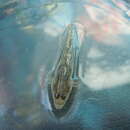Diagnostic Description
(
Inglês
)
fornecido por Fishbase
This species is distinguished from its congeners by the following characters: upper part of caudal fin longer than the lower part; anterior extremity of anterior oculoscapular canal in front of middle of eye; no posterior oculoscapular canal; back unscaled in front of origin of second dorsal; breeding males with 4-8 dark bars when alive; total scales in midlateral series 33-40 (Ref. 59043).
- licença
- cc-by-nc
- direitos autorais
- FishBase
Life Cycle
(
Inglês
)
fornecido por Fishbase
Males defend eggs in cavities under stones, plant material or molluscs shells (Ref. 59043). Females spawn several times during a season (Ref. 59043).
- licença
- cc-by-nc
- direitos autorais
- FishBase
Morphology
(
Inglês
)
fornecido por Fishbase
Dorsal spines (total): 6 - 8; Dorsal soft rays (total): 7 - 9; Analspines: 1; Analsoft rays: 8 - 9
- licença
- cc-by-nc
- direitos autorais
- FishBase
Biology
(
Inglês
)
fornecido por Fishbase
Occur in shallow water, on sand and among weeds (Ref. 4696). Live less than 2 years. Feed on small benthic invertebrates (Ref. 59043). Spawn after first winter. Females may spawn several times during a season. Males defend eggs in cavities under stones, plant material or molluscs shells (Ref. 59043) like underside of lamellibranch valves (Cardium, Monodonta, Unio, etc.) (Ref. 4696). Eggs hatch at 3.0-3.8 mm (Ref. 59043).
- licença
- cc-by-nc
- direitos autorais
- FishBase

